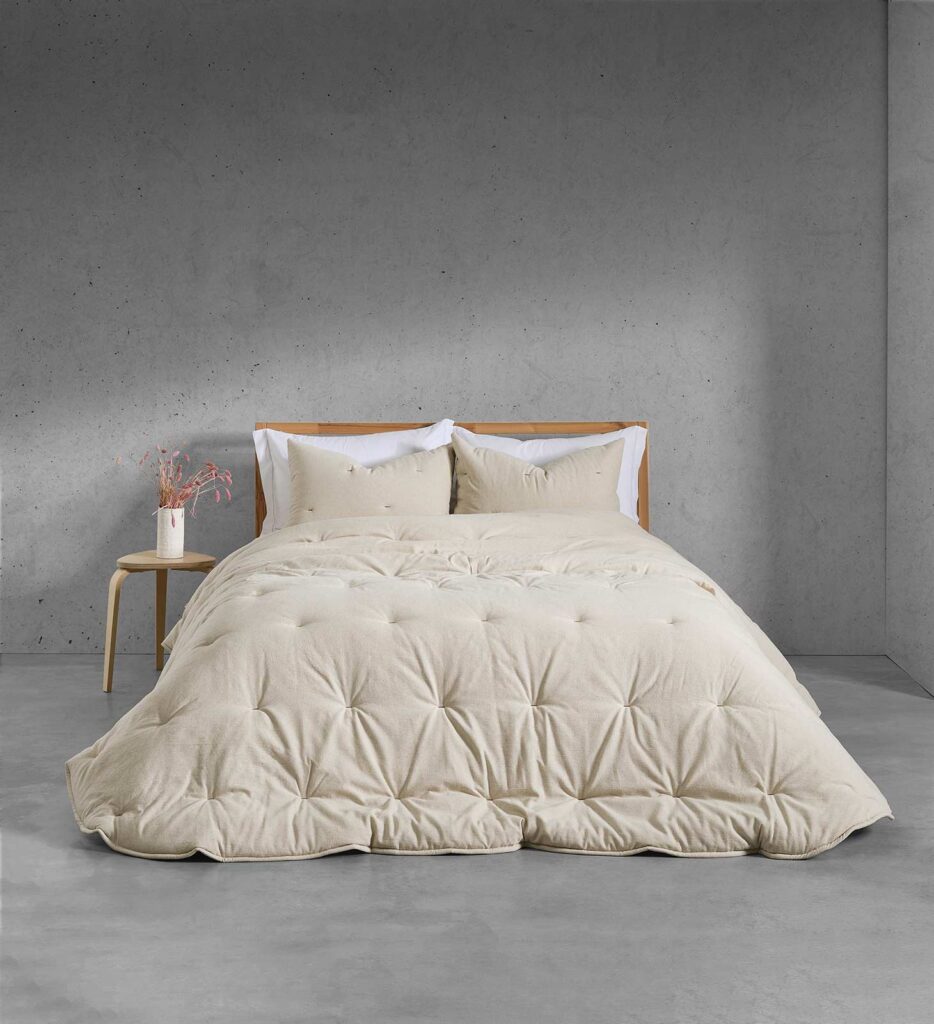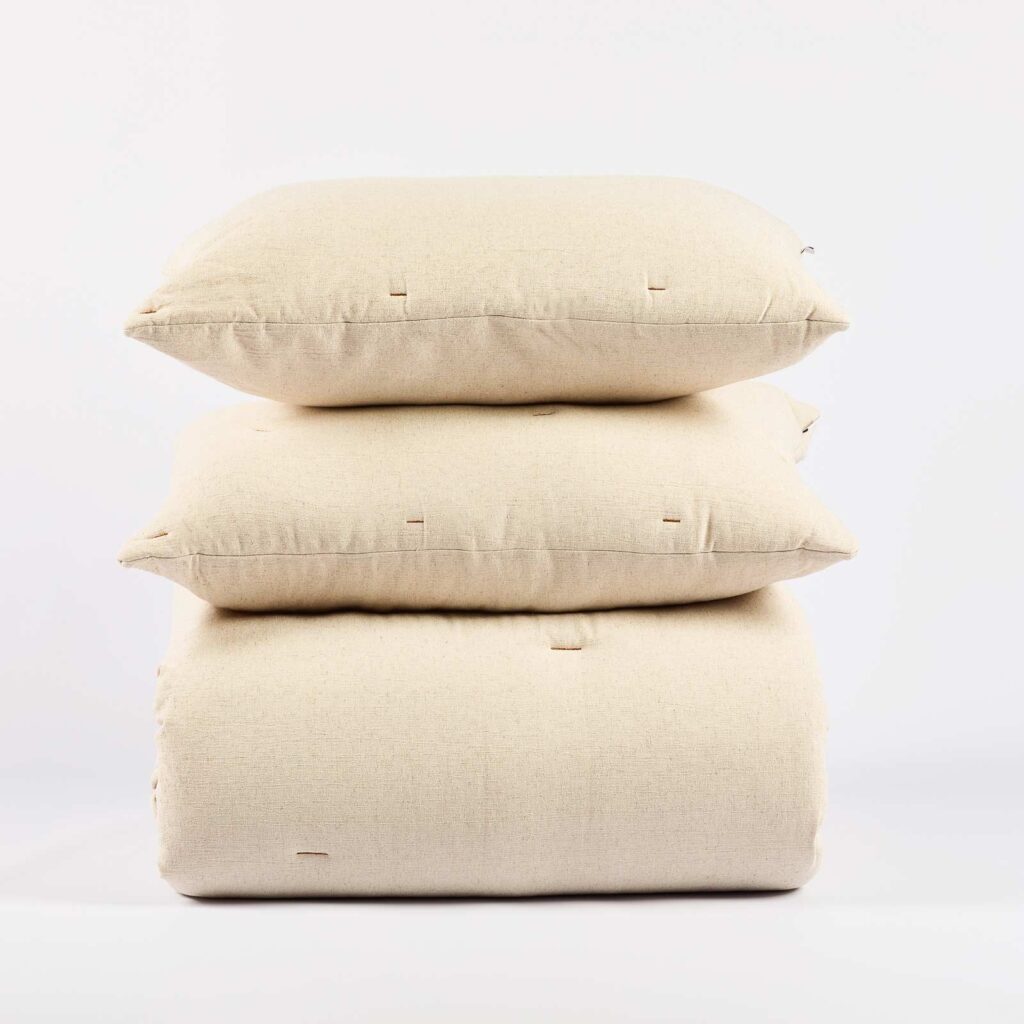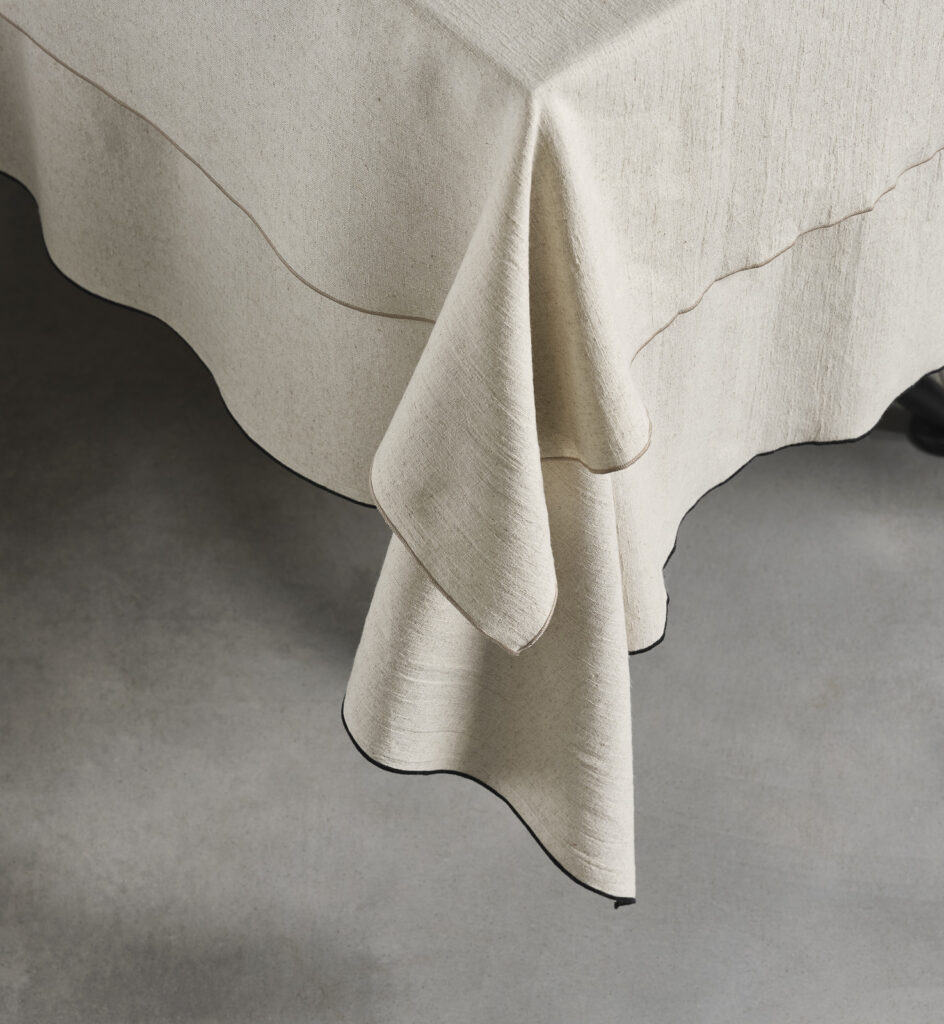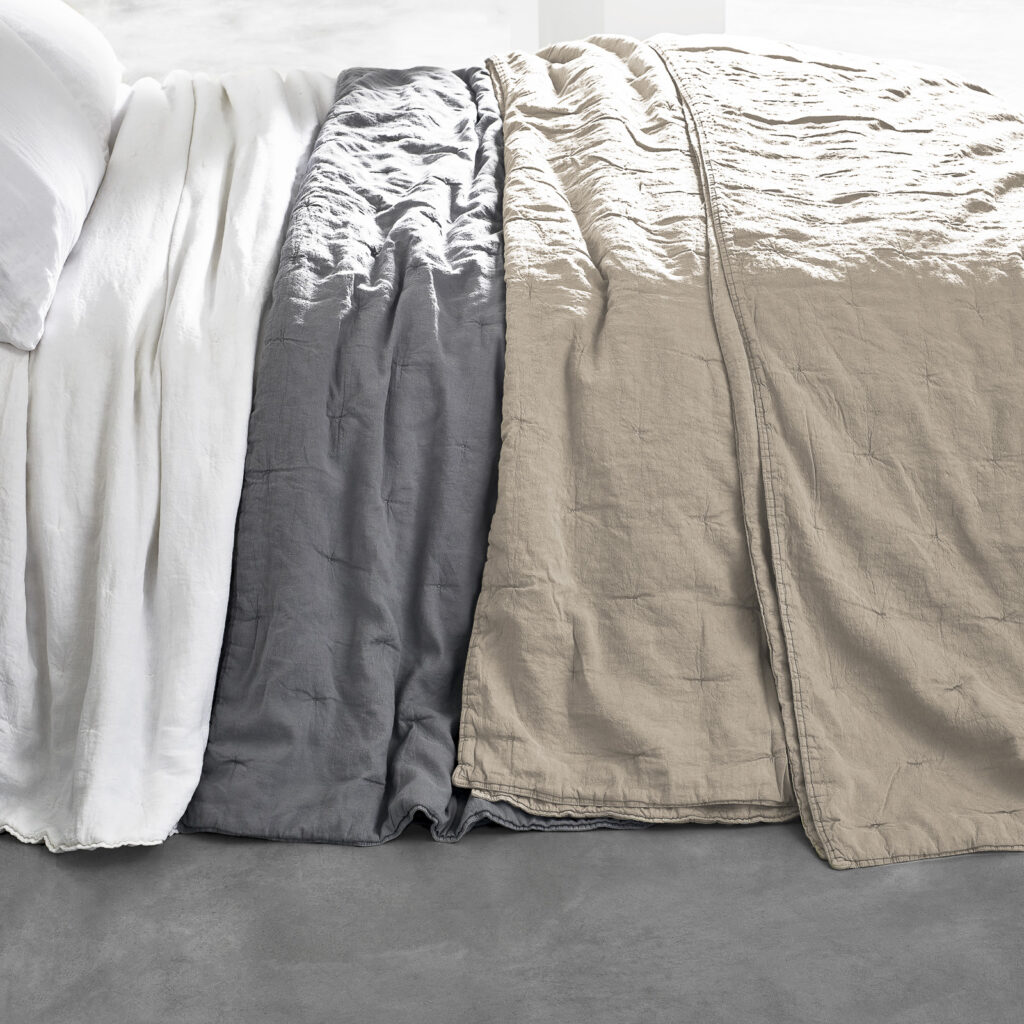Linen is an herbaceous plant of the Linaceae family, native to Europe and Asia. It is grown mainly for its fiber, which is used to produce fabrics, clothing, and other items. The linen plant consists of a main root, stems, and leaves. The flowers are small and white or bluish, and the fruit is capsule-shaped seeds.
Linen fiber is extracted from the stems of the plant, going through a process of harvesting, seed removal, and processing. The harvest is done manually or mechanically, depending on the size of the plantation. After harvesting, the stalks are stomped to break the seed fibers, then they are washed and brushed to remove the rest of the plant part. Processing is the process of cleaning and preparing the fiber for spinning. This involves removing impurities and defibrillating the fiber to make it softer and shinier.
Linen fiber is widely used for the production of fabrics for bedding, towels, summer clothes, and other items. In addition, it is widely used in the production of paper, rope, and yarn.
Linen is also a very important plant in agriculture. It is a short-cycle plant, requiring little space, and can be grown in poor soils. It is also very resistant to pests and diseases and requires few pesticides. In addition, it is a low environmental impact plant, as it does not require the use of chemical fertilizers and is able to grow in adverse climatic conditions.
Linen is an environmentally friendly choice, as it is a low environmental impact plant and is biodegradable. It is also resistant to mold and bacteria, which makes it ideal for bedding and towels. Flax is also very soft and cool to the touch, which makes it a popular choice for summer clothing.
In summary, linen is a versatile plant with a variety of uses and benefits. Its fiber is known for its strength, durability, and softness, and is used for the production of fabrics, clothing, and other items.




Linen bedding is a popular choice because of its unique characteristics and benefits. Linen fiber is known for its durability, strength, and softness. It is highly resistant to wear and shrinkage, which makes it ideal for bedding production.
Linen is also highly absorbent, which makes it useful for producing sheets and pillowcases. It is also mold and bacteria-resistant, which makes it an ideal choice for bedding, especially for damp or warm rooms. In addition, it is very cool and soft to the touch, which makes it comfortable for sleeping.
Linen bedding is also known for its natural and elegant appearance. It has a unique texture and a natural sheen that is difficult for other fibers to replicate. It is commonly used for the production of sheets, pillowcases, blankets, and other high-quality bedding items.
Linen bedding is also an environmentally friendly choice because it is biodegradable and produced with less environmental impact compared to other fibers.
KNOW MORE